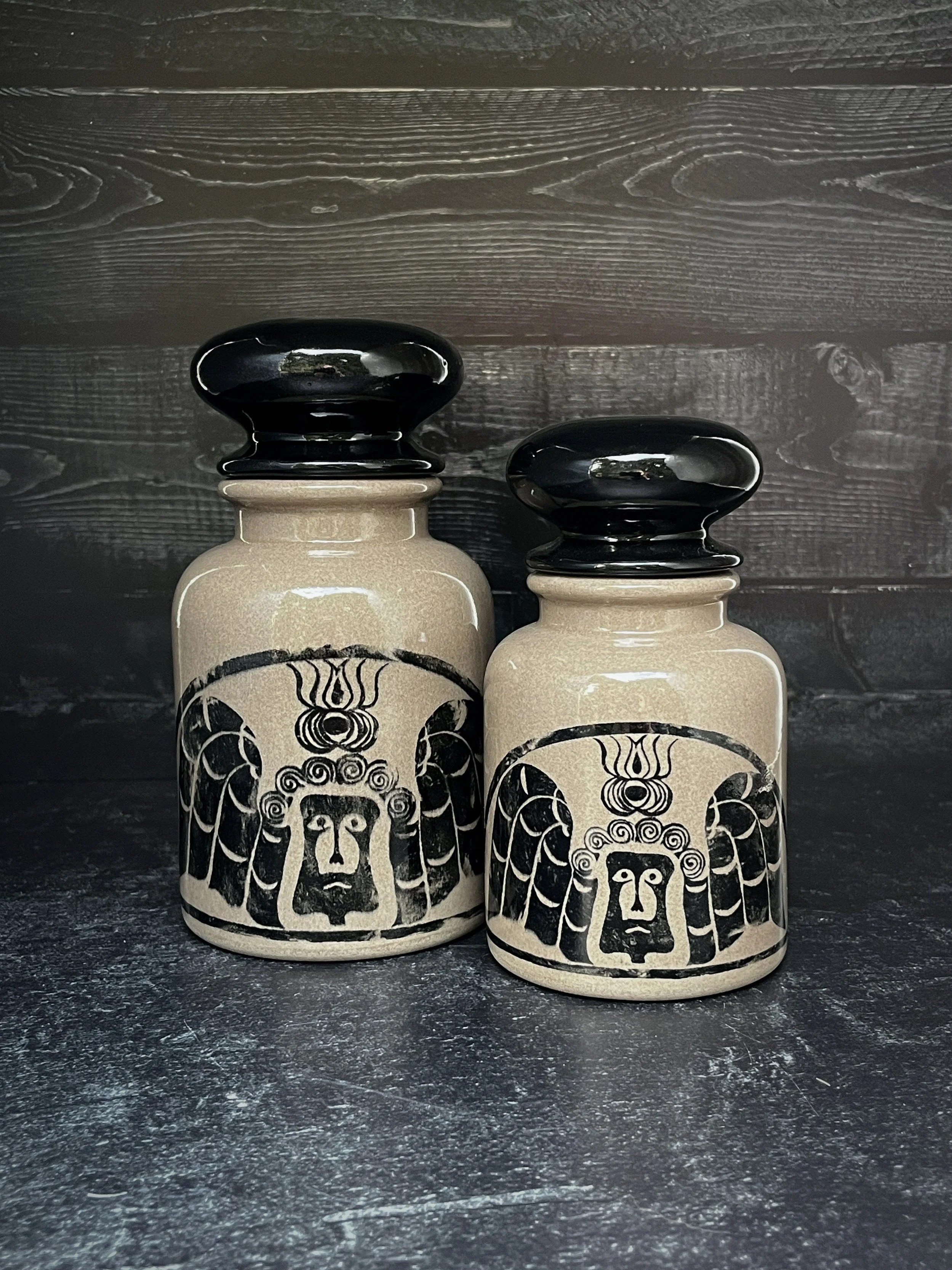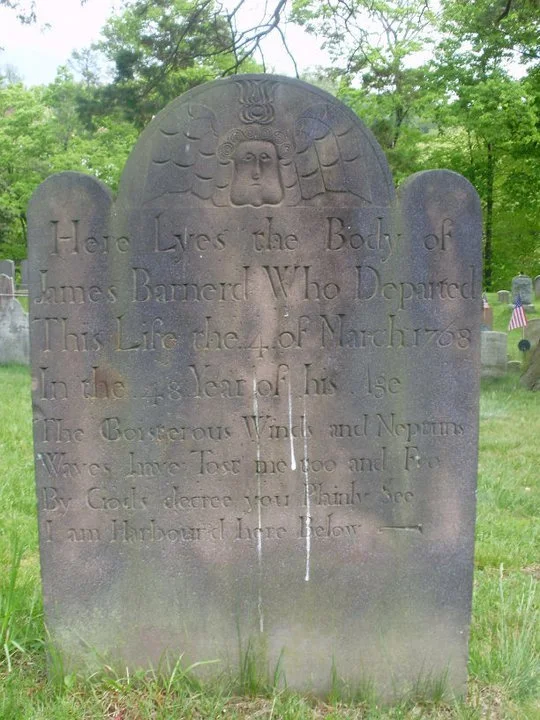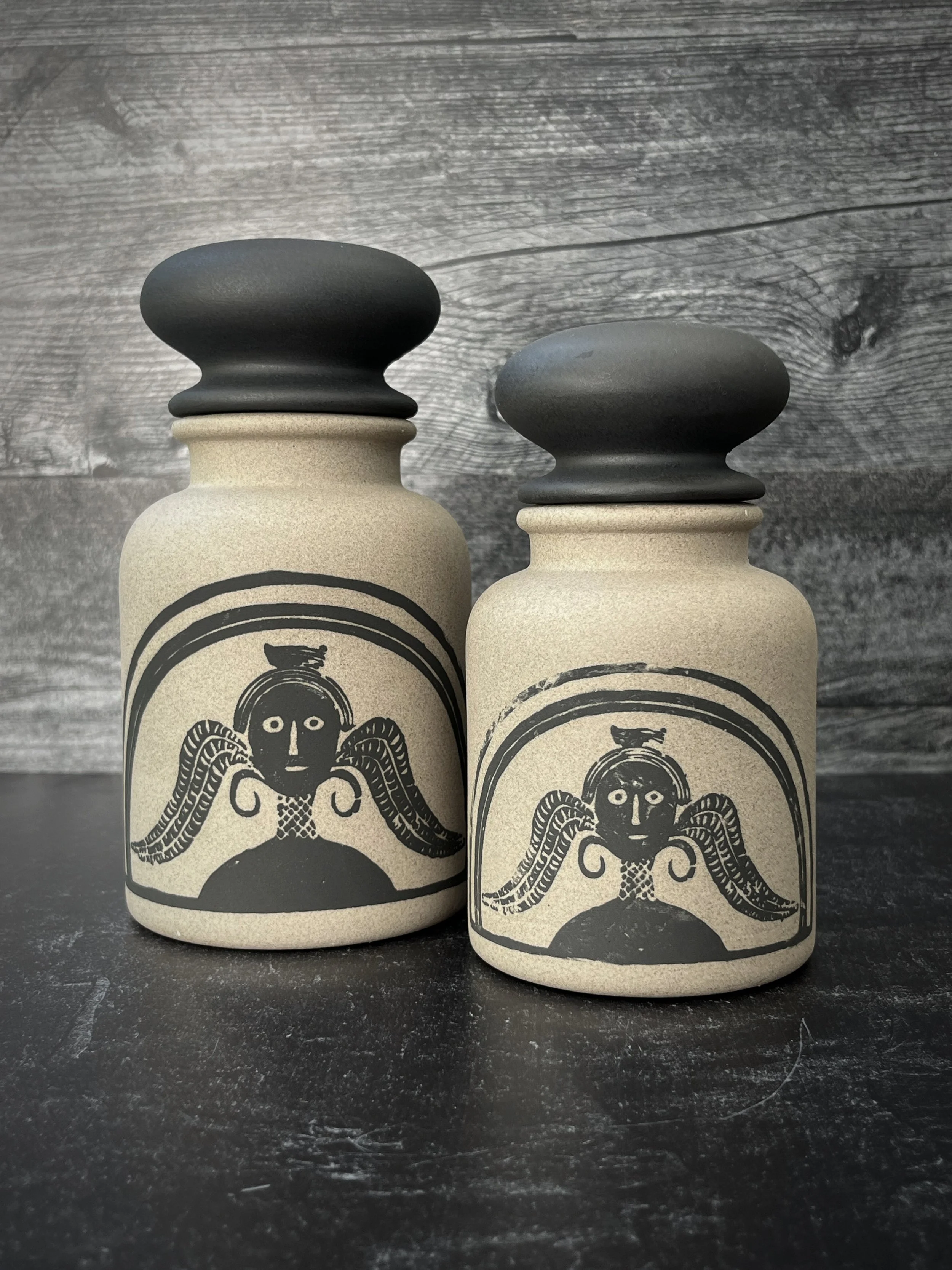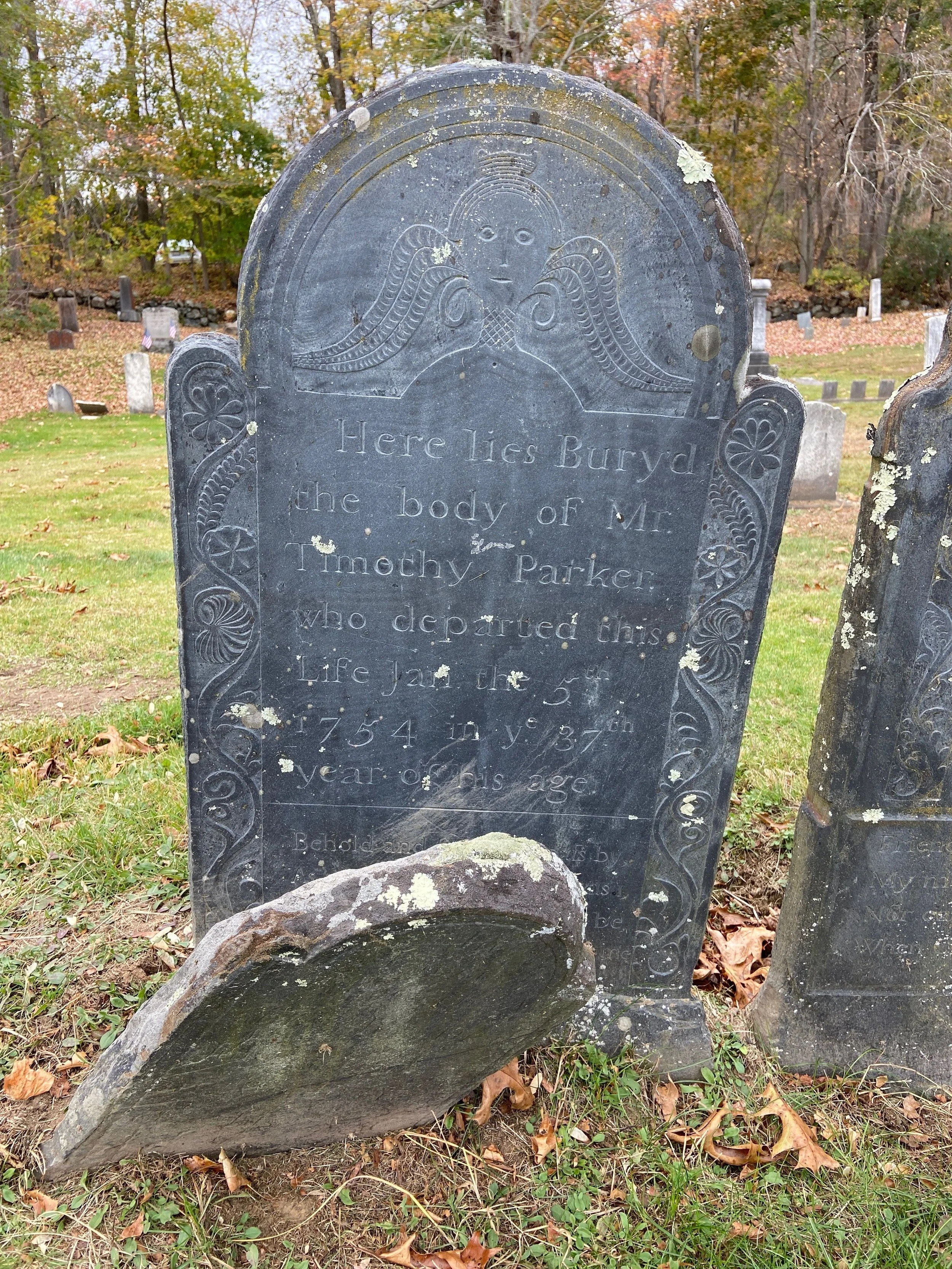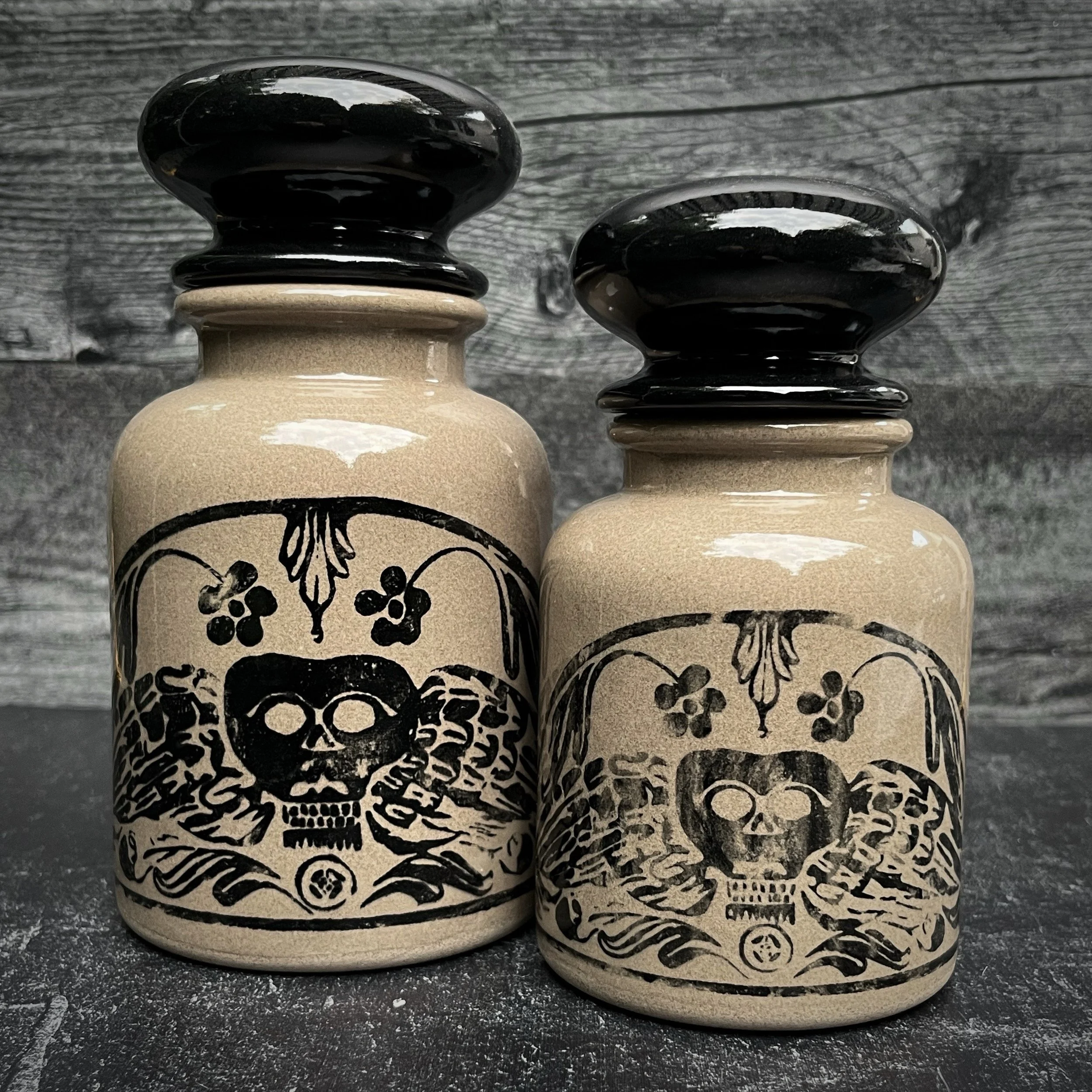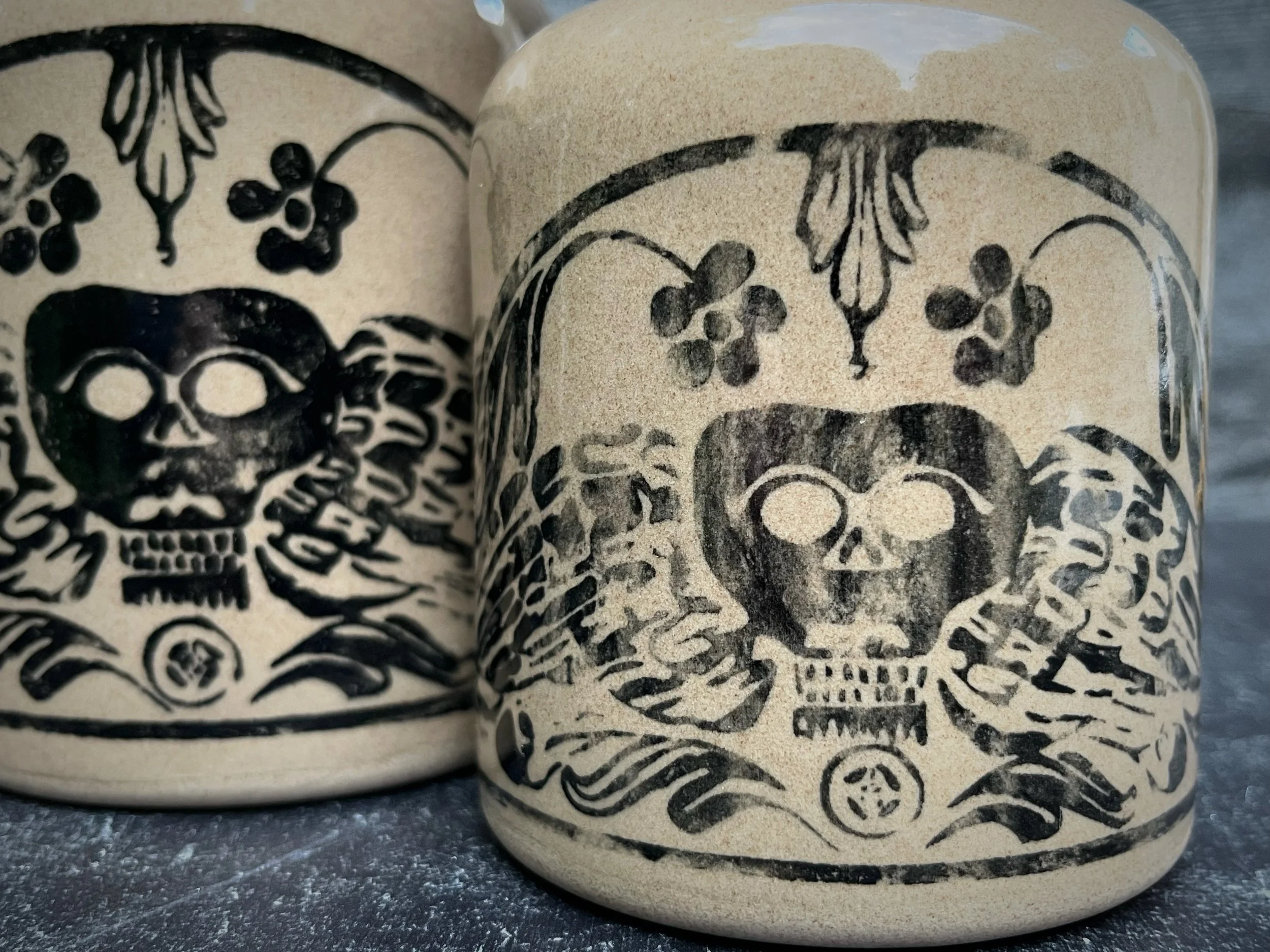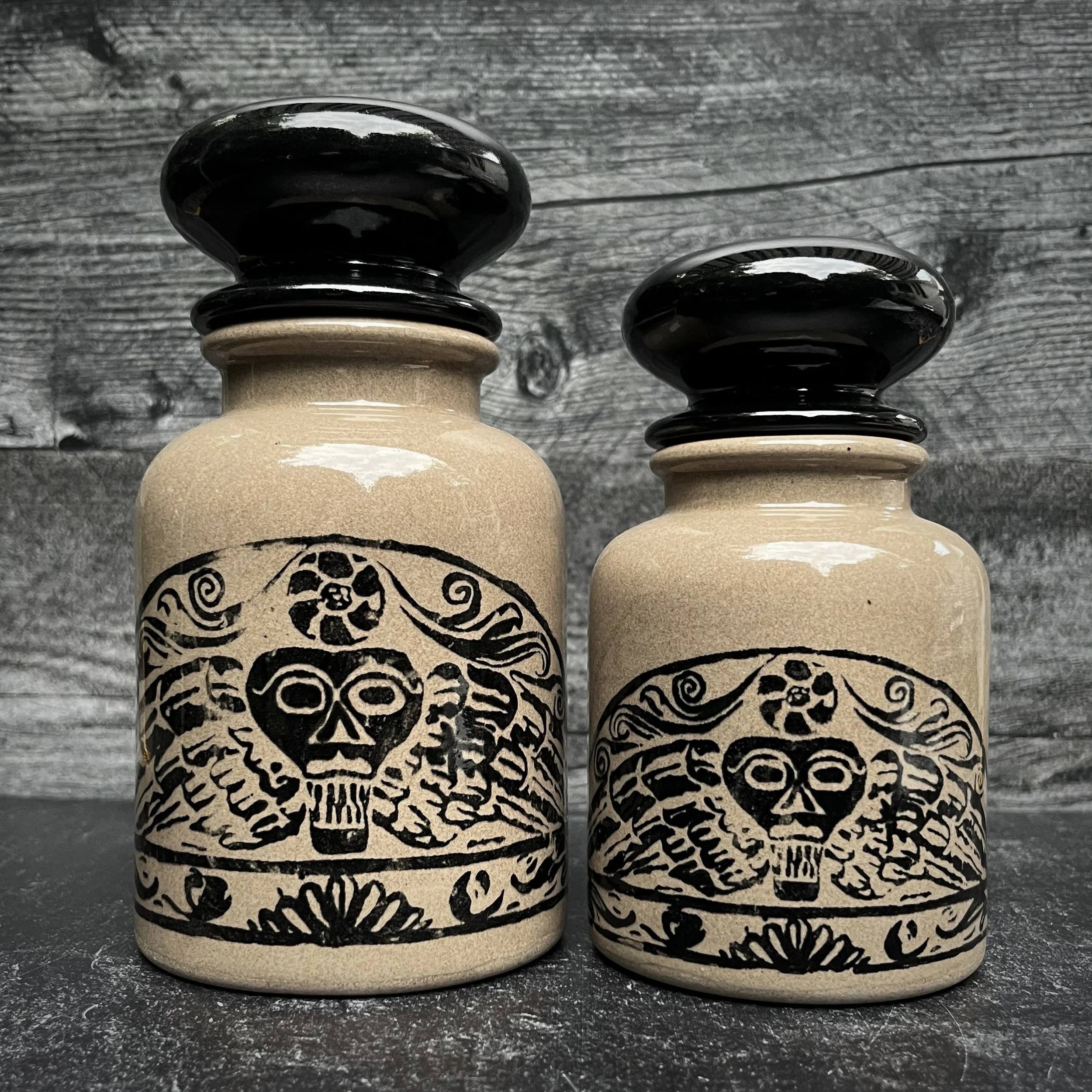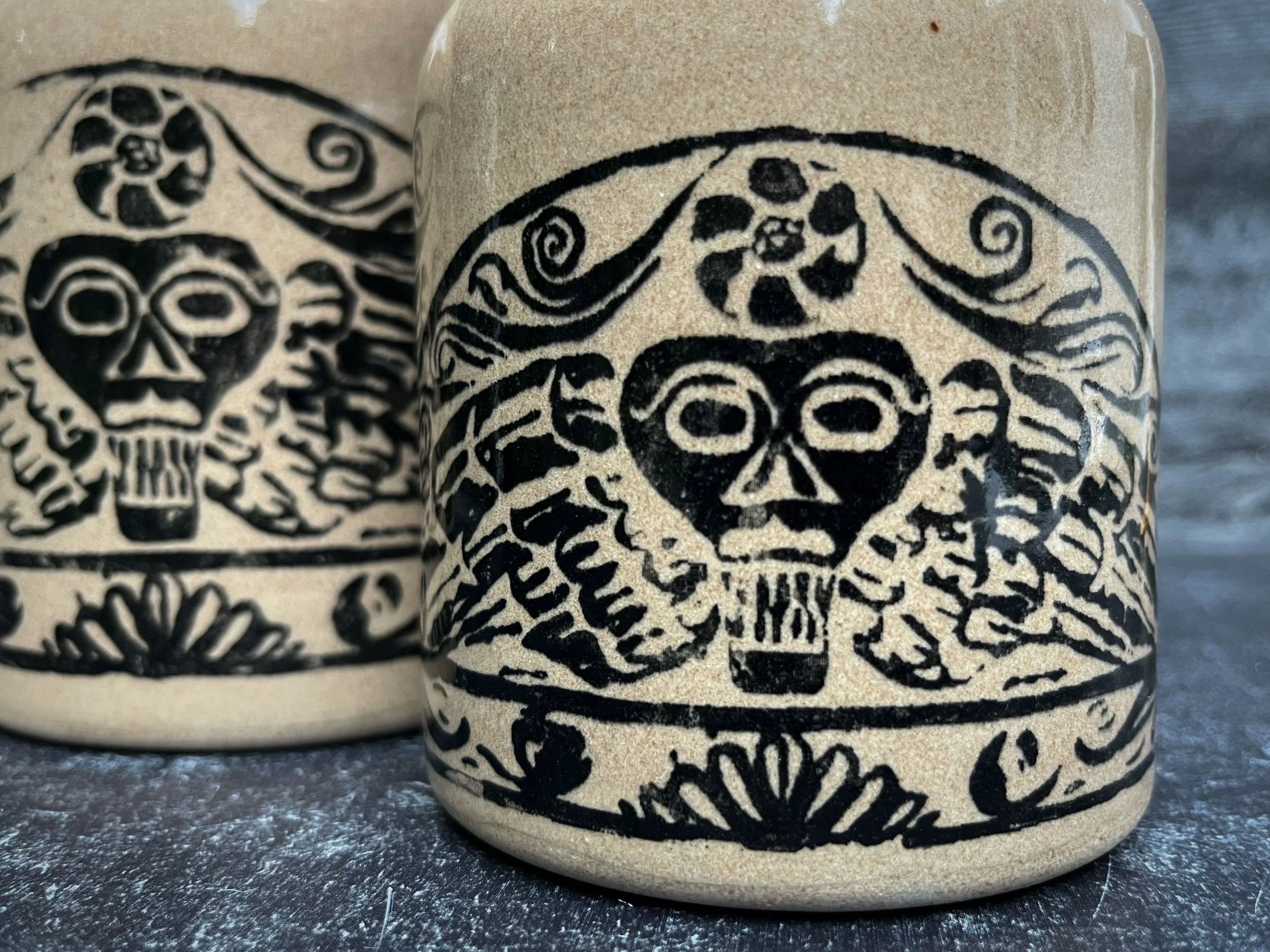 Image 1 of 4
Image 1 of 4

 Image 2 of 4
Image 2 of 4

 Image 3 of 4
Image 3 of 4

 Image 4 of 4
Image 4 of 4





Soul Effigy Apothecary Jar – Agnes Crawford (1760)
This design features a rubbing from the gravestone of Agnes Crawford (1678–1760) Born in Cappagh, County Tyrone, Northern Ireland, Agnes was buried in the Old Burial Ground in Rutland, Massachusetts, far from her birthplace. Her stone was carved by William Young (1714–1795), the celebrated “Thistle-Carver of Tatnuck,” himself an Irish immigrant. Part of the 1718 Scots-Irish migration, Young settled in Worcester County, where he became a respected town leader, surveyor, justice of the peace—and a gravestone carver whose work is now considered among the most distinctive in New England. Young carved a great many gravestones for other Irish immigrants in the region, preserving both their memory and a visual echo of their heritage.
Young’s stones are instantly recognizable. His faces often feature long, distinguished noses formed by continuing the brow line downward, small straight mouths, low foreheads, and wide, staring eyes. Figures are given rounded shoulders and extremely narrow necks, with men depicted in stylized wigs and women in close-fitting caps, as seen here. His borders and ornamentation frequently incorporate thistles, cornel, tulips, and other plants—symbols tied to his heritage and his love of the local landscape. The Agnes Crawford stone includes his signature thistle motif, carved into the border along the bottom of the tympanum.
As noted by Harriette Merrifield Forbes in Gravestones of Early New England and the Men Who Made Them, Young’s imagination and poetic sensibility often found their way into his work. Forbes speculates that when carving the Agnes Crawford stone, he may have recalled the “honeybirds” from an Irish folktale—the tiny birds perched on the shoulders of King Curucha’s daughter in the land of Tir Conal—blending Old World memories with New England stone.
I’ve adapted a vintage gravestone rubbing of this effigy into a silkscreen, then printed it onto speckled gray slipcast stoneware, cast from a vintage mold and fired raw (unglazed) for a velvety matte finish. Available in two sizes, each jar is a contemporary tribute to colonial gravestone carving across New York and New England, highlighting the distinct regional styles and individual artistry of early carvers.
The larger jar measures approximately 3.5 inches in diameter and 6.5 inches tall with the lid on.
The smaller jar measures approximately 3 inches in diameter and 5.5 inches tall with the lid on.
Please note: Each piece is handmade, and small variations are to be expected. The photos shown are representative of the design, but not the exact jar you will receive—making each item one of a kind.
This design features a rubbing from the gravestone of Agnes Crawford (1678–1760) Born in Cappagh, County Tyrone, Northern Ireland, Agnes was buried in the Old Burial Ground in Rutland, Massachusetts, far from her birthplace. Her stone was carved by William Young (1714–1795), the celebrated “Thistle-Carver of Tatnuck,” himself an Irish immigrant. Part of the 1718 Scots-Irish migration, Young settled in Worcester County, where he became a respected town leader, surveyor, justice of the peace—and a gravestone carver whose work is now considered among the most distinctive in New England. Young carved a great many gravestones for other Irish immigrants in the region, preserving both their memory and a visual echo of their heritage.
Young’s stones are instantly recognizable. His faces often feature long, distinguished noses formed by continuing the brow line downward, small straight mouths, low foreheads, and wide, staring eyes. Figures are given rounded shoulders and extremely narrow necks, with men depicted in stylized wigs and women in close-fitting caps, as seen here. His borders and ornamentation frequently incorporate thistles, cornel, tulips, and other plants—symbols tied to his heritage and his love of the local landscape. The Agnes Crawford stone includes his signature thistle motif, carved into the border along the bottom of the tympanum.
As noted by Harriette Merrifield Forbes in Gravestones of Early New England and the Men Who Made Them, Young’s imagination and poetic sensibility often found their way into his work. Forbes speculates that when carving the Agnes Crawford stone, he may have recalled the “honeybirds” from an Irish folktale—the tiny birds perched on the shoulders of King Curucha’s daughter in the land of Tir Conal—blending Old World memories with New England stone.
I’ve adapted a vintage gravestone rubbing of this effigy into a silkscreen, then printed it onto speckled gray slipcast stoneware, cast from a vintage mold and fired raw (unglazed) for a velvety matte finish. Available in two sizes, each jar is a contemporary tribute to colonial gravestone carving across New York and New England, highlighting the distinct regional styles and individual artistry of early carvers.
The larger jar measures approximately 3.5 inches in diameter and 6.5 inches tall with the lid on.
The smaller jar measures approximately 3 inches in diameter and 5.5 inches tall with the lid on.
Please note: Each piece is handmade, and small variations are to be expected. The photos shown are representative of the design, but not the exact jar you will receive—making each item one of a kind.






